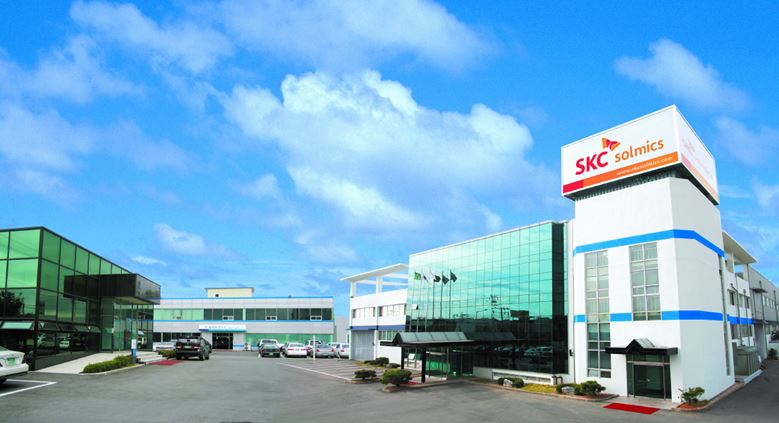● The board decided on October 11, 2017 to invest 21.9 billion won in the production of two consumable parts that are used to manufacture semiconductors in a proactive move to meet the growing demand better
● The investment decision is _ base_d on the prediction for facilities expansion by customers; the company aims to raise its global market share to more than 10% by 2025
With its recent earnings exceeding market expectations, SKC Solmics (Oh Jun-rok, CEO) is preparing itself for a major leap forward by expanding its production facilities for silicon and quartz, consumable parts used in the production of semiconductors. The demand for these parts increases in tandem with the growth of the semiconductor industry. Nowadays, the demand for semiconductors is rising fast with the improvement of communication and information technology including IoT and autonomous vehicle.
Facilities expansion as a proactive response to the growing demand
SKC Solmics called a board meeting at the head office in Jangdang, Pyeongtaek-si, Gyeonggi-do on October 11, 2017, and the board decided to invest 21.9 billion won in expanding the production facilities for quartz and silicon, consumable parts used in semiconductor processing. The company will spend 10.4 billion won on building additional quartz production facilities and invest 11.5 billion won in expanding and improving the silicon production facilities by the second quarter of next year.

<SKC Solimics' Head Office>
Quartz is a high-purity glass with strong heat resistance and high light transmission; it is in high demand in various fields including the diffusion process of oxidizing wafers and the etching process of eliminating areas other than the circuit patterns in semiconductors. Silicon is a material used in the etching process, and the demand for silicon remains steady because the material needs to be replaced frequently. According to the company’s estimate, the global quartz market is expected to reach approximately 800 billion won, and the silicon market is forecast to be worth approximately 550 billion won this year.
The investment decision represents the company’s move to realize the company’s long-term vision of becoming a total semiconductor solutions leader that offers the full spectrum of products including semiconductor materials, parts, and equipment and to respond to the market demand proactively. According to the estimate of consulting firm International Business Strategies (IBS), the semiconductor market is growing 6.7% on average annually. The 380 trillion won semiconductor market (as of 2015) is expected to more than double to 700 trillion won by 2025. Given the trend, semiconductor makers at home and abroad are moving fast to expand their production facilities.
The facilities investment will increase production capacity by 35%, and the company is considering further facilities expansion in 2019 or later in line with the global market trend
The new production facilities will begin operation in July 2018 upon completion of the equipment transfer and setup. With the expanded facilities, the company’s production capacity will be increased by 35%. SKC Solmics is considering further facilities investment in 2019 or later and other moves in order to respond to the changing market trend proactively. With these facilities investments, the company aims to increase its sales -- which stood at 53.7 billion won in 2016 -- and raise its global market share to more than 10% by 2025.
“We will actively expand cooperation including technological tie-ups with leading companies around the world in order to secure top-quality technology and eventually emerge as Korea’s No. 1 total semiconductor solutions provider. We will spare no efforts in connection with localization and facilities expansion so that we can help our domestic and global customers become more competitive by offering high-quality products at reasonable prices,” SK Solmics CEO Oh Jun-rok said.
Founded in 1995, SKC Solmics is the fine ceramics pioneer in Korea. The company produces alumina and silicon, silicon carbide, quartz, and other fine ceramic products. It is also leading efforts for the localization of semiconductor and display parts. Since discarding its photovoltaic generation business that it launched in 2011, the company has been concentrating on its core business of fine ceramics. In the first half of this year, sales increased 40% to 61.2 billion won, and operating profit rose 23% to 10.1 billion, compared to the same period of the previous year. [End]
